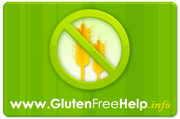Because even the tiniest amount of gluten can make celiacs ill, reading labels in selecting gluten-free foods is one of the necessary skills celiac patients should acquire right at the start of their gluten-free diet. However, it isn’t enough for celiacs to look for a “gluten-free” label to stay safe in the U.S. Although proposals for gluten-free labeling laws are in the works, currently there is no official definition in this country for “gluten-free.”
According to Living Without, neither of the two major food government agencies, the U.S. Department of Agriculture, which regulates egg, meat, and poultry products, nor the FDA, which oversees packaged and other foods, have a specific definition for “gluten free.” As it stands, the FDA’s standard for gluten-free labeling is that the label be “truthful and not misleading.” This means that if a food is supposed to be “free” of an ingredient, it shouldn’t have that ingredient in it.
Unfortunately, this standard isn’t workable when it comes to gluten-free products. Whereas other products which claim to be “free” of substances such as caffeine or sodium can be confirmed with testing to indeed have zero of these substances, Living Without reports that the technology for testing for zero gluten isn’t yet developed, according to attorney Andrea Levario, who is the executive director o the American celiac Disease Alliance (ACDA).
As it stands, gluten is tested in parts per million (ppm) and the smallest detectable amount is presently 20 ppm. According to Living Without, celiac experts are in agreement that this is a safe amount for celiacs to ingest. However, other countries define “gluten-free” as having below 20 ppm.
According to AmericanCeliac.org, the Food Allergen Labeling and Consumer Protection Act 0f 2004 (FALCPA) has required the FDA to formulate voluntary gluten-free labeling laws. The website provides a series of questions and answers from the FDA regarding the current proposals, which were developed in 2006. These current proposals require that the gluten content be less than 20 ppm and that the product itself can’t have 20 ppm or more of gluten, due to the limitations in the current analytic technology.
According to Living Without, “With the number of products making unregulated gluten-free claims on the rise, the marketplace can be potentially dangerous for consumers with gluten sensitivity and wheat allergy.” Recognizing this fact, the American Celiac Disease Alliance is clarifying the proposed gluten-free labeling regulations on its website, www.AmericanCeliac.org.
Before this labeling regulation can be put into effect, according to Celiac.com, the FDA needs to make another draft of the proposal public, gather and consider the commentary generated from the new draft, and then publish a notice regarding the safety assessment. “The FDA will likely publish the notice on the safety assessment soon,” Celiac.com reports, but there is no indication as to just when they will issue the final rule. With “gluten-free” labeling on the rise, it seems more crucial than ever to get these regulations passed with a clear definition for “gluten free.”
Tina Turbin
k.m.
Resources:
American Celiac Disease Alliance: Gluten-Free Labeling Proposed Rule
Celiac.com: FDA Set to Adopt New Gluten-Free Labeling Standards In-Line with New Codex Alimentarius Standards http://www.celiac.com/articles/21617/1/-FDA-Set-to-Adopt-New-Gluten-Free-Labeling-Standards-In-Line-with-New-Codex-Alimentarius-Standards/Page1.html
Diet.com: Contamination of Naturally Gluten-Free Grains http://new.diet.com/blogs/read/contamination-of-naturally-glutenfree-grains/19524
“GF Product CLAIMS: Can You Trust Them?” Living Without: April/May 2010.
From our home to yours, Tina Turbin
If you have any questions or suggestions just email me at Info (at) TinaTurbin (dot) com.









Well now at least the guidelines have been proposed and you can leave your opinions during a special comment period which extends into the month of October–I forgot exactly until when. You can visit 1in133.org to sign a great letter with some astute comments on the proposals.
It really disappoints me, but I can’t say that I’m surprised at all, by all the companies now labeling their foods “gluten free.” How do they even know? I’ve called several up and they don’t even have testing. But of course GF foods became really popular and they want to make money, so it’s only natural that they jump on the bandwagon. Little do they know how they can be putting at risk the health of their customers. I cannot WAIT for their to be real guidelines on the gluten-free label. Then we’ll see which companies really do care about us!
Hmm this isn’t the case for long anymore. Can you believe the proposals finally came out??? I couldn’t believe it myself when I found out! I recommend the 1in133.org website for people who want to know more about what’s going on with this and what the proposed guidelines say. I couldn’t even believe they are proposing a “low in gluten” label. What’s the good in that? *shakes head* Some people just don’t get it, do they?